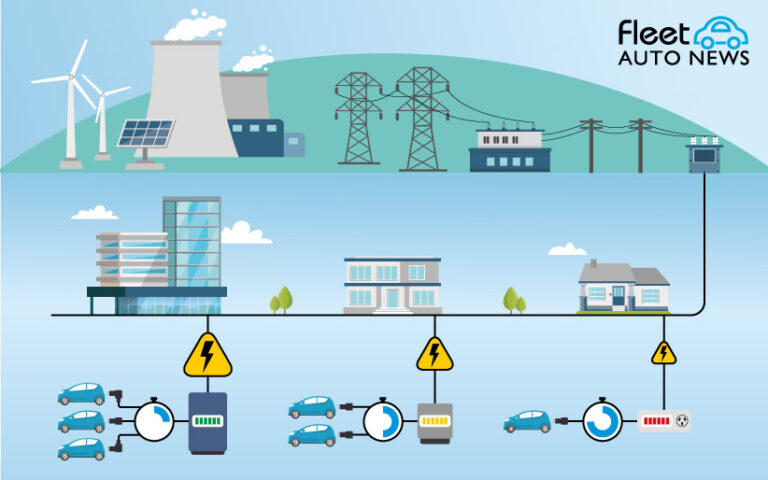– By Ed Neilan – (Renewables and EV Infrastructure Consultant)
On-site commercial charging for fleets will need to be a standard feature over the next decade as fleets migrate to the EV’s. Corporate fleets and government will set the way forward buying the largest share of EV’s initially, which will flow into the secondhand market in the following few years. Unfortunately for most buildings, it is not as simple as just plugging in the EV chargers.
Energy demand levels are changing and the introduction of Electric Vehicles (EV) on mass over the next decade is a certainty. New EV models are being released monthly at lower prices and with more KM range, and internal combustion engines are being transitioned out by most OEM’s over the next decade or sooner.
So, how will your fleet be charged up when you move to all electric vehicles?
Many of my clients across different sectors have started to ask what they need to consider in the electrification of fleets. Great question, but the answers might shock some people.
EV charging at large scale requires early planning of the buildings electrical-distribution systems and the incoming grid infrastructure. In some cases, a few of my clients have already been declined further power upgrades by the Utility provider in some locations. Electrical equipment such as chargers must be integrated in building design and retrofits.
Each scenario will be different. Not all buildings are capable of the increased power requirements for large EV fleet numbers. It is easy for the initial few installs, but as EV numbers expand rapidly over the next few years in Australia, we will see higher demand for chargers in the commercial world.
Zero emissions and ESG (Environmental, sustainable and governance) will accelerate the trend to electric for obvious reasons. Meeting EV electricity demand will require the installation of dedicated and shared charge points depending on the fleet requirements and building set ups.
You must consider the costs of building infrastructure and the charger infrastructure. There are several critical steps that need to occur to prepare for EV fleets. How the EV fleet will be powered in terms of grid supply or renewables.
Major upgrades (which will be many) will be needed and require long lead times to assess, cost and plan any modifications, sizing and capacity constraints. Then budget pricing on equipment and the modifications or retrofit of the buildings electrical infrastructure to supply adequate capacity for the new demand.
Every building is different in age and design, making it more complex. No one size fits all as each will be quite different in original build and electrical infrastructure. As a general guide you need to consider the many steps and understand site limitations. These will be covered in the next article in this series.
It is a major mistake to act without good governance and get the right advisory for assessment and planning. The bigger the fleets, the bigger the challenges. (All doable, if you know all the pitfalls and traps and plan early to budget and schedule modifications in time.)
This is where I counsel clients to get an energy roadmap and strategy around the progressive transformation to electric fleets. This is required so you do not unnecessarily waste capital, time and effort over the longer term because planning was poor or non-existent.
We will talk more about the process and path forward in coming articles. Early planning will save time, money and big headaches.
Ed came out of the energy industry dealing with electricity and renewables, including large scale solar projects, battery storage and EV chargers. He now consults to different sectors from Property and Aged Care to Engineering and Stand-alone power systems with Electricity Utilities across renewables and management consulting, using more than a decade of his C-level experience to make the complex simple and easy to follow.






